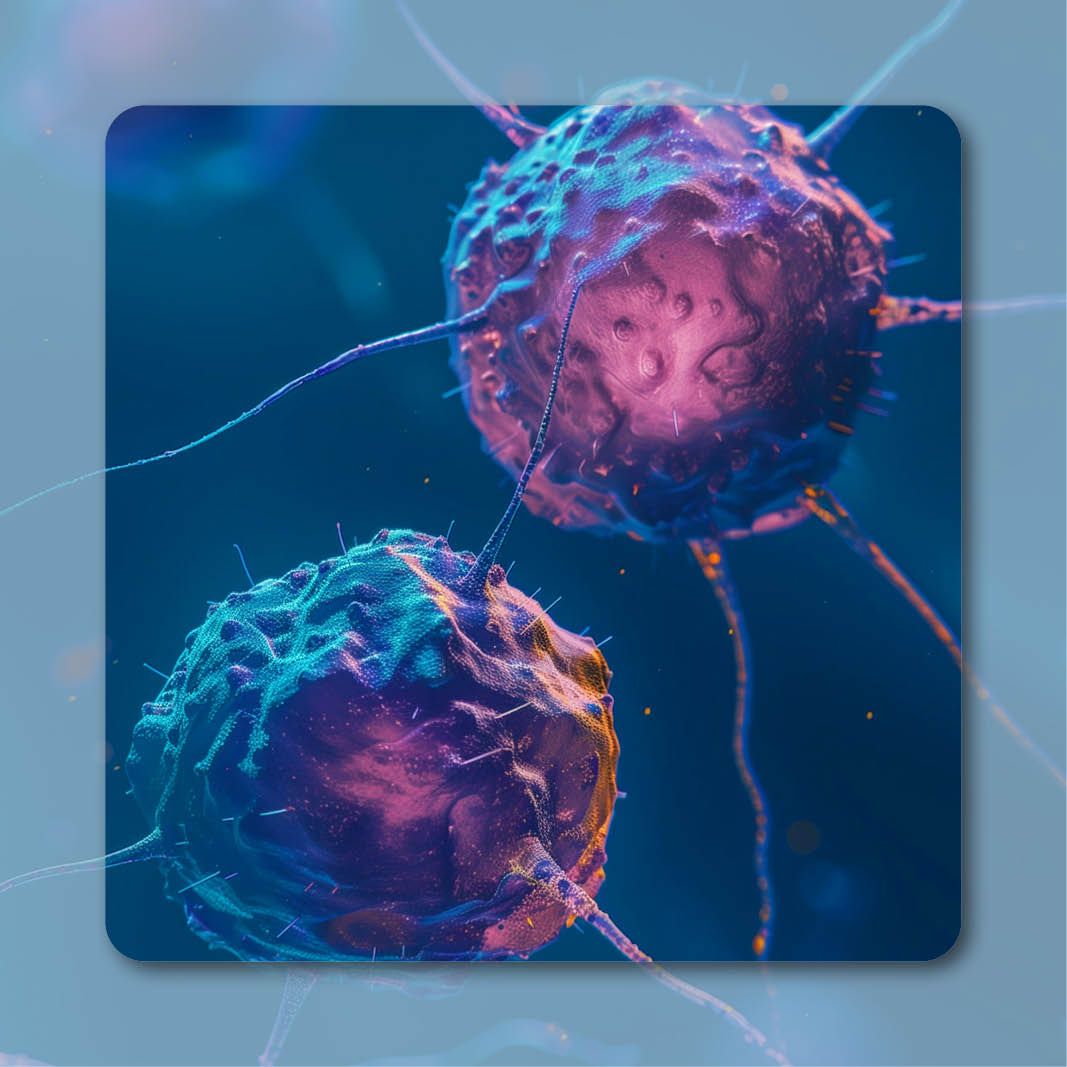Commentary
Article
Liquid Biopsy Shows Potential for Detecting Sarcomatoid Features in RCC
Karl Semaan, MD, MSc, discusses the clinical advantages of liquid biopsy over tissue biopsies in detecting sarcomatoid renal cell carcinoma.
Karl Semaan, MD, MSc

Early findings from an analysis of a liquid biopsy epigenomic profiling assay have highlighted its potential as a diagnostic tool for detecting sarcomatoid features in patients with renal cell carcinoma (RCC), according to Karl Semaan, MD, MSc.
Data presented at the 2024 Kidney Cancer Research Summit demonstrated that the liquid biopsy assay—developed using chromatin immunoprecipitation and sequencing for H3K27ac—achieved an area under the receiver operating characteristic curve of 0.92 for classifying plasma samples. These data suggest that liquid biopsy could overcome the tumor heterogeneity challenges that limit the accuracy of traditional tissue biopsies in detecting sarcomatoid components, Semaan said.
“We're trying to improve [this assay to be more predictive]; however this has major implications [for] cancer care because we would be able to select an immunotherapy or dual immunotherapy regimen for patients with sarcomatoid RCC, or those who at least have a high signal of sarcomatoid score,” Semaan said.
In an interview with OncLive®, Semaan detailed how this comprehensive profiling could enhance diagnostic accuracy for patients with RCC, explained why detecting sarcomatoid features is important for informing treatment strategies, and highlighted the potential clinical implications of this liquid biopsy.
Semaan is a postdoctoral research fellow at Dana-Farber Cancer Institute in Boston, Massachusetts.
OncLive: What is the current prognosis for patients with sarcomatoid differentiation in RCC?
Semaan: Sarcomatoid differentiation in RCC is known for a worse prognosis in patients who present with these features. It's an aggressive cancer with a median overall survival of approximately 6 months. However, fortunately, it responds well to immunotherapy, [as shown in] studies in recent years. The challenge here is being able to detect [sarcomatoid differentiation] accurately. On tissue biopsies, it is sometimes missed because of sampling error and tumor heterogeneity.
How could liquid biopsy potentially improve the ability to detect sarcomatoid differentiation compared with tissue biopsy?
In our approach, we suggest a liquid biopsy that can detect sarcomatoid differentiation, overcoming these challenges of tumor heterogeneity. [Liquid biopsy can] pick up the whole tumor burden. We developed an assay based on epigenomic signatures of the sarcomatoid differentiation in RCC that is able to pick up this transcriptional activity signal using a recently described approach by our group in labs of Matthew L. Freedman, MD, and Sylvan C. Baca, MD, PhD, [both of Dana-Farber Cancer Institute], called cell-free ChIP-seq, based on the detection of histone marks in circulating tumor DNA [ctDNA].
How do you see this liquid biopsy assay filling an unmet need for patients with sarcomatoid differentiation?
Since sarcomatoid differentiation is often missed on a tissue biopsy, some patients may miss out on getting the preferred treatment, which is dual immunotherapy. They may receive immunotherapy in combination with a VEGF TKI, which sometimes might not be optimal for these patients. However, [patients would benefit] if our assay detects a high sarcomatoid score or a high sarcomatoid-specific signal, even if they do not present with any sarcomatoid features in the metastatic biopsy. Clinicians could use this [liquid biopsy result] to administer dual immunotherapy for these patients, and they might [gain some] benefit from this treatment, which will hopefully improve their clinical outcomes in the long run.
How does this liquid biopsy approach safeguard against sampling errors compared with other strategies?
When a tumor biopsy is performed on a patient, sarcomatoid features may be present in some metastases but are often not present on the whole tumor. [For example], a metastasis sampled that does not present a sarcomatoid feature, and these features may present elsewhere. The advantage of liquid biopsy is that it picks up the whole tumor burden. It is the aggregate of the whole tumor burden of the patient across their entire body, including from the primary tumor, if they have not undergone nephrectomy yet. The fact that it picks up the whole tumor burden makes it easier to detect any sarcomatoid-specific signal in this liquid biopsy assay.
What are the next steps for further research regarding the utility of this liquid biopsy approach?
We would like to make this score a little bit more predictive in terms of clinical outcomes. Currently, it's just a yes or no [answer regarding sarcomatoid differentiation]. You either suspect sarcomatoid differentiation in this patient or you don’t. However, we would like to correlate the score with something such as worse clinical outcomes to help characterize the patient's prognosis.
Reference
Semaan K, El Zarif T, Caniff J, et al. Liquid biopsy epigenomic profiling for detection of sarcomatoid renal cell carcinoma. Presented at: 2024 Kidney Cancer Research Summit; July 11-12, 2024; Boston, MA. Abstract 44.


















